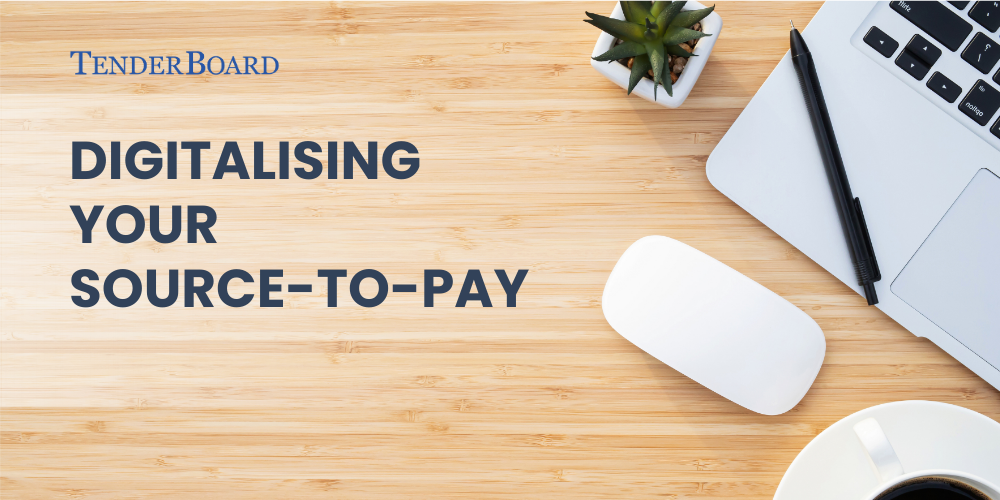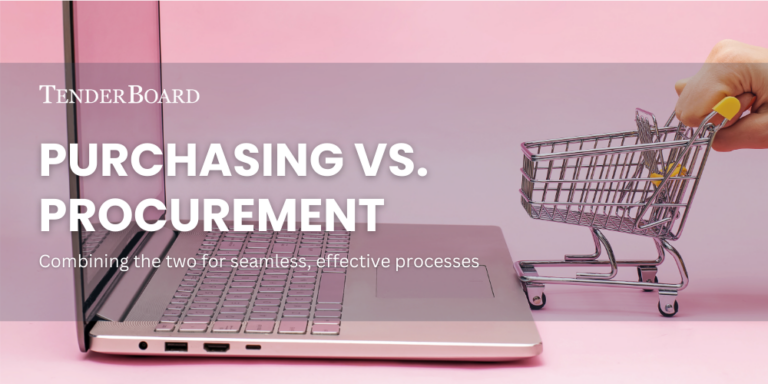Optimising procurement processes is crucial for organisations to stay competitive and maximise efficiency. Today, we will delve into the intricacies of the Source to Pay process (S2P) and how eProcurement enhances its efficiency and effectiveness.
Additionally, we will also compare the difference between the S2P, Procure to Pay process (P2P) and Source to Contract process (S2C).
The Difference between Procure to Pay (P2P) vs Source to Contract (S2C) vs Source to Pay (S2P)
Procure-to-Pay
P2P is a focused process that deals with the transactional flow of procurement activities, beginning with the creation of a purchase order, followed by the receipt of goods and culminating in the payment of invoices. It’s primarily concerned with the operational aspects of buying, paying for, and accounting for goods and services.
P2P offers a clear, linear process suited to routine or standardised purchases, and is essential in scenarios with well-established supplier relationships.
Source-to-Contract
The Source-to-contract (S2C) process is a workflow within the procurement function that encompasses the initial stages of identifying suitable suppliers, to the finalisation of contractual agreements. This method involves multiple steps, starting with supplier discovery and evaluation, followed by negotiations to establish terms and conditions that align with the company’s requirements while ensuring fair and beneficial agreements for both parties.
Once terms are agreed upon, contracts are drafted, reviewed, and finalised, outlining the specifics of the relationship between the organisation and its chosen suppliers.
Source-to-Pay
Source to Pay, or S2P, represents a more comprehensive approach, integrating both strategic and transactional procurement activities.
Like the S2C process, it starts from identifying potential suppliers, evaluating and selecting them, negotiating contracts, and then it includes all the P2P steps from requisitioning to payment.
In essence, S2P can be viewed as an umbrella term that encompasses the entirety of procurement activities from beginning to end. The process extends the scope by including elements that enable more strategic decision-making, competitive negotiations, and long-term relationship management with suppliers.
In summary, P2P represents a significant portion of procurement, focusing on the execution and compliance of transactions, it’s S2P that provides the full spectrum view, aligning procurement with broader business objectives and enabling more sophisticated supplier engagements
How eProcurement enhances the S2P process
1. Improves Operational Effiency
Electronic procurement or e-Procurement plays a crucial role in enhancing the Source-to-Pay (S2P) process by bringing in automation, efficiency, and analytical capabilities.
Bringing about a reduction in human errors is one of the main benefits of introducing e-procurement to your organisation’s S2P process. This is because traditional manual procurement processes are often laden with human errors such as incorrect data entry, misplaced documents, or communication breakdowns.
By automating these tasks, your organisation eliminates any opportunities for errors caused by form filling, data processing, or mishandling of documents.
Furthermore, procurement systems speeds up the S2P process by providing a centralised platform for procurement activities. This allows procurement teams to manage sourcing, purchasing, and payment processes seamlessly, with real-time data and analytics at their fingertips.
It also has the benefit of speeding up the procurement cycle and facilitating better decision-making. One example of this is how eprocurement software allows staff to analyse supplier performance data to negotiate better terms, or track spending patterns to optimise budgets.
2. Reduces Rogue Spending
Incorporating eprocurement into the Source-to-Pay (S2P) process is pivotal in reducing rogue or maverick spending. Rogue spending refers to purchases that are not in compliance with an organisation’s procurement policies.
S2P software prevents rogue spending by ensuring that there is an audit trail for all procurement activities. This allows transactions to be tracked, monitored, and traced back to the individual who made the purchase.
Furthermore, eprocurement systems allow users to be directed to pre-negotiated rates through effective contract management. That way, purchases are always made at the agreed-upon terms. Additional controls include requiring users to buy from a list of pre-approved vendors, thereby enforcing compliance with the company’s preferred supplier relationships.
Ensuring this level of visibility means that employees are more likely to adhere to procurement policies, knowing that their actions are being monitored and can be audited.
Moreover, an eprocurement system empowers the procurement team with additional oversight on purchases, which is crucial in ensuring compliance with company policies.
A good eprocurement platform allows teams to set up approval workflows and implement procurement controls, where purchases above a certain threshold, or from non-preferred suppliers, require approval.
This adds an extra layer of scrutiny to the purchasing process, ensuring that purchases are justified and in alignment with the organisation’s procurement strategy
3. Improve Vendor Management and Relationships
Implementing eprocurement within the Source-to-Pay (S2P) process brings substantial improvements in vendor management by facilitating better collaboration among various departments.
The Source-to-Pay process requires the involvement of multiple stakeholders, including the procurement department, suppliers, inventory managers, and the finance team. In a traditional procurement setup, this can lead to data silos where information is not easily accessible to all the parties involved.
For example, the reliance on manual communication like emails can create bottlenecks, especially when there are delays i.e. staff members on leave. This fragmented approach makes vendor management cumbersome and inefficient.
Implementing an eprocurement system addresses these challenges by unifying the entire S2P process under a single platform. The platform should be accessible by all relevant stakeholders, and thus ensure that everyone has all the information they need. This fosters collaboration as different departments can work together more efficiently.
Similarly, the finance team has immediate access to invoices and can process payments more swiftly.
Furthermore, eprocurement systems often come with features specifically designed for vendor management, such as supplier portals, performance tracking, and communication tools. This allows for more efficient and transparent interaction with suppliers, and enables the procurement team to better manage supplier relationships.
What to Look for in an eProcurement Software for Your Company
There are different types of procurement software you can consider. When selecting the most suitable eprocurement software for your company, it’s essential to identify features that will significantly enhance your procurement processes. These can include features such as:
- The ability to create custom approval workflows to ensure all your compliance needs are met.
- Easy-to-use tools and platform.
- Centralises communication with suppliers for improved collaboration.
- A Vendor Portal that allows immediate collaboration directly on the platform between your organisation and suppliers.
- Seamless integration with 3rd party software e.g. ERP/financial software to streamline procurement and business operations.
- Automates and digitalises time-consuming tasks related to purchasing, sourcing, and approvals.
- Flexibility to invite or source for suppliers
Understanding and efficiently managing the source to pay process is pivotal for businesses striving to improve procurement efficiency and control costs.
Through eprocurement, businesses can automate and streamline their S2P processes, minimise errors, and enhance collaboration among stakeholders.
As the procurement landscape continues to evolve, investing in the right tools and practices for S2P management is indispensable for organisations to gain a competitive edge, build stronger supplier relationships, and drive sustainable growth.
Learn more about quality eProcurement software here.













